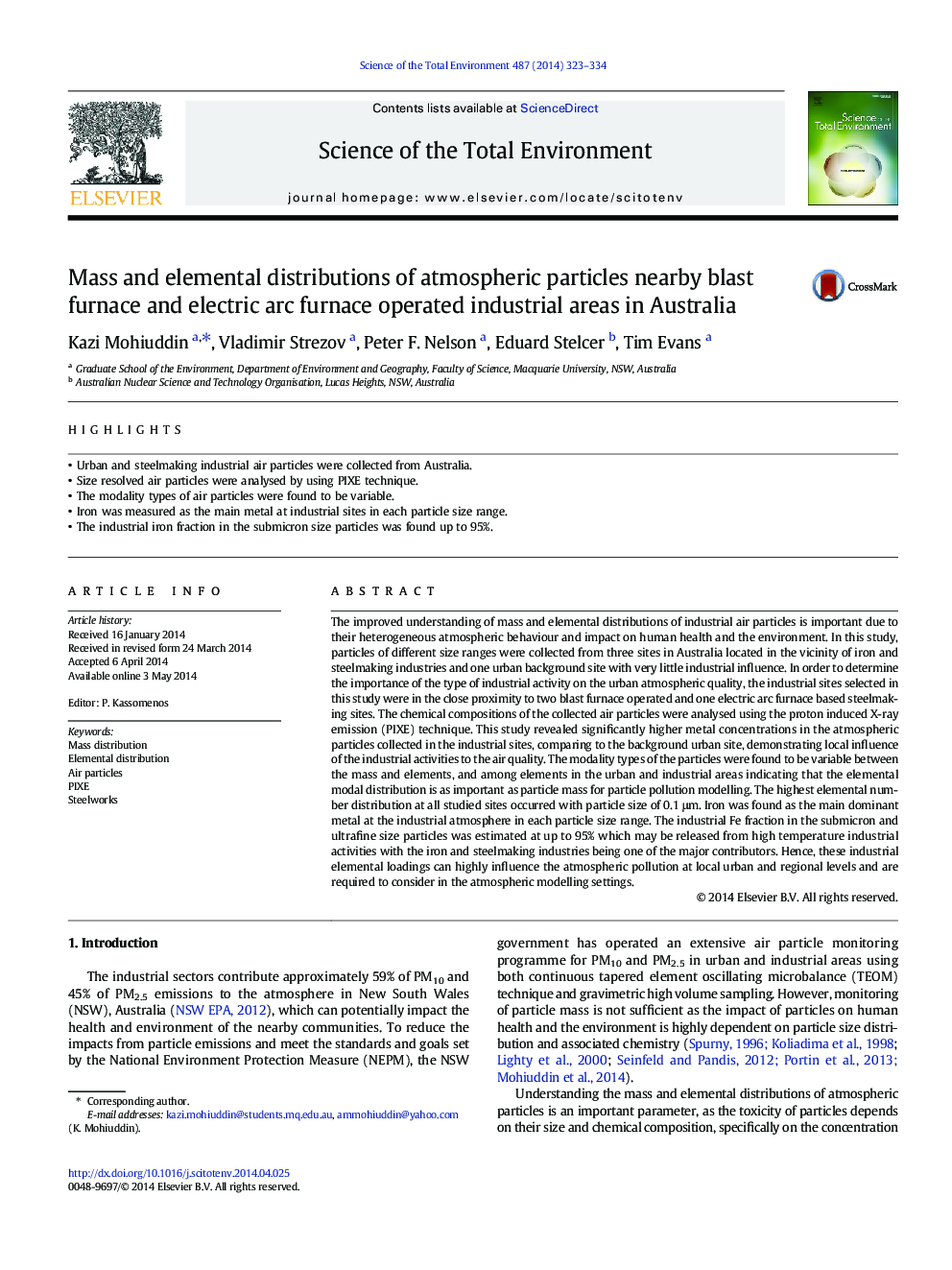| Article ID | Journal | Published Year | Pages | File Type |
|---|---|---|---|---|
| 6329942 | Science of The Total Environment | 2014 | 12 Pages |
â¢Urban and steelmaking industrial air particles were collected from Australia.â¢Size resolved air particles were analysed by using PIXE technique.â¢The modality types of air particles were found to be variable.â¢Iron was measured as the main metal at industrial sites in each particle size range.â¢The industrial iron fraction in the submicron size particles was found up to 95%.
The improved understanding of mass and elemental distributions of industrial air particles is important due to their heterogeneous atmospheric behaviour and impact on human health and the environment. In this study, particles of different size ranges were collected from three sites in Australia located in the vicinity of iron and steelmaking industries and one urban background site with very little industrial influence. In order to determine the importance of the type of industrial activity on the urban atmospheric quality, the industrial sites selected in this study were in the close proximity to two blast furnace operated and one electric arc furnace based steelmaking sites. The chemical compositions of the collected air particles were analysed using the proton induced X-ray emission (PIXE) technique. This study revealed significantly higher metal concentrations in the atmospheric particles collected in the industrial sites, comparing to the background urban site, demonstrating local influence of the industrial activities to the air quality. The modality types of the particles were found to be variable between the mass and elements, and among elements in the urban and industrial areas indicating that the elemental modal distribution is as important as particle mass for particle pollution modelling. The highest elemental number distribution at all studied sites occurred with particle size of 0.1 μm. Iron was found as the main dominant metal at the industrial atmosphere in each particle size range. The industrial Fe fraction in the submicron and ultrafine size particles was estimated at up to 95% which may be released from high temperature industrial activities with the iron and steelmaking industries being one of the major contributors. Hence, these industrial elemental loadings can highly influence the atmospheric pollution at local urban and regional levels and are required to consider in the atmospheric modelling settings.
